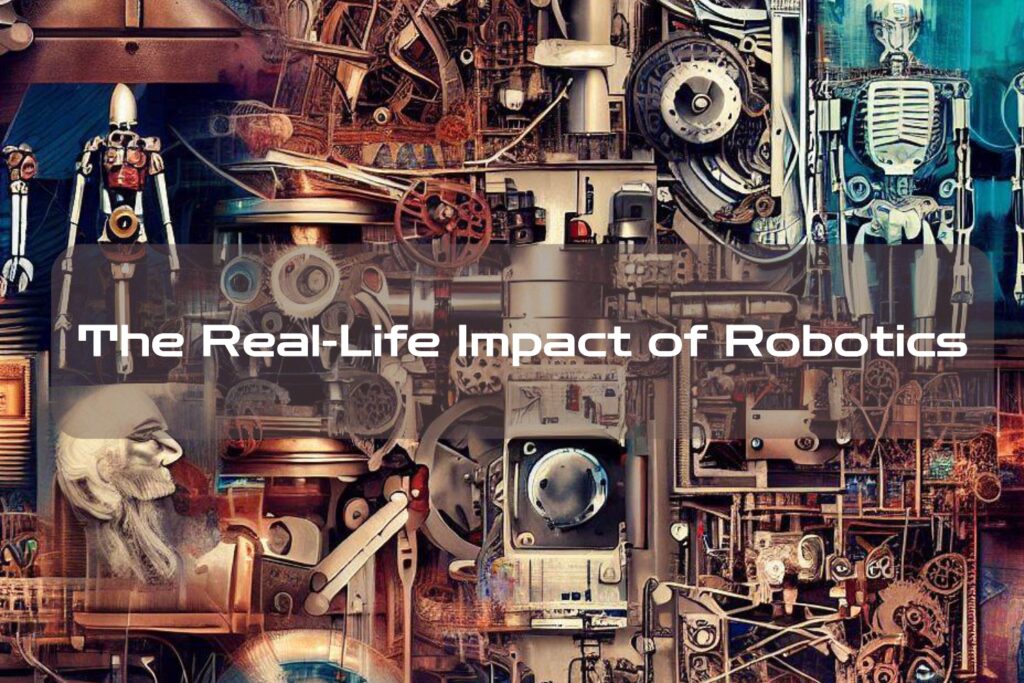Beyond Fiction: The Real-Life Impact of Robotics
Robotics has been a fascinating subject for both science fiction enthusiasts and scientists alike for decades. From the likes of Isaac Asimov’s Three Laws of Robotics in I, Robot to the futuristic worlds depicted in films like Blade Runner and The Terminator, robots have always been at the forefront of popular culture. However, what may have once seemed like mere science fiction has now become an integral part of modern society.
In recent years, we have seen a remarkable increase in the use of robots in various industries. From manufacturing and healthcare to space exploration and even warfare, robotics technology has revolutionized how we approach various aspects of our lives.
Robotic systems are capable of performing tasks that would be impossible or too dangerous for humans – such as exploring inhospitable environments like outer space or deep sea trenches – as well as simplifying mundane tasks that were previously carried out by humans. It is undeniable that robotic technology has had a significant impact on society as we know it today.
While some people still see robots as mere machines that perform specific tasks, they are much more than that; they represent one of the most exciting fields in science and engineering today. Therefore, understanding their evolution is more important than ever before.
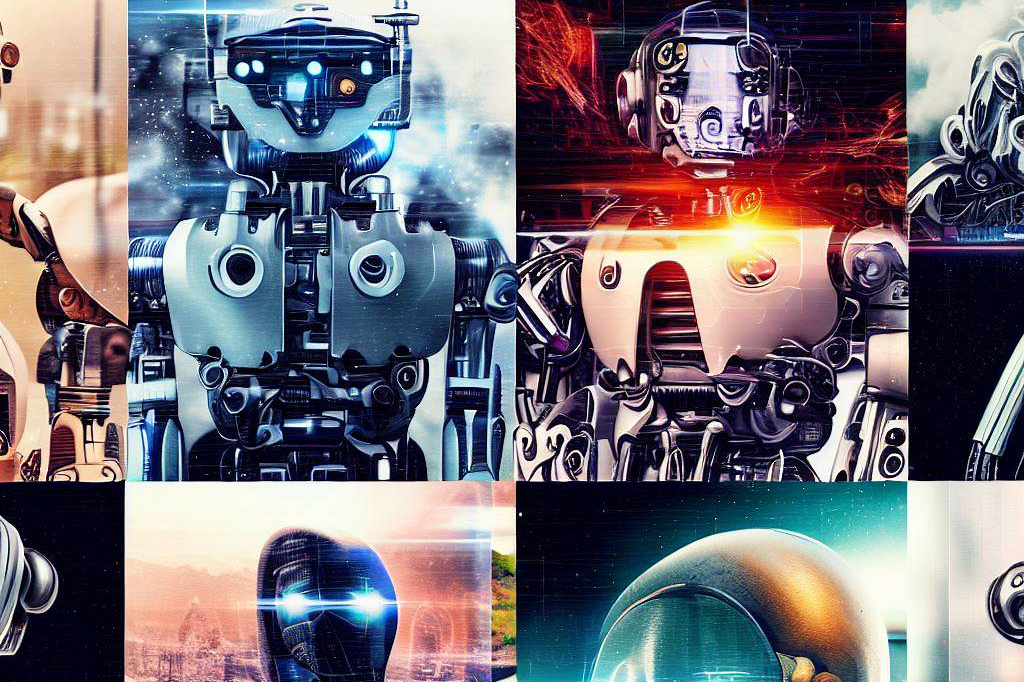
Early Robotics
Ancient Civilizations and Their Use of Automata
The use of automata, or self-operating machines, can be traced back to ancient civilizations such as the Greeks and Egyptians. These early forms of automation were often used for entertainment purposes, such as the famous water clocks in Ancient Greece which used a system of gears and signals to display the time.
One of the most impressive examples of ancient automation can be found in China’s Han Dynasty (202 BC-220 AD), where engineers created incredible mechanical maids that could pour wine, play music, and even write calligraphy. These devices were powered by water pressure and included complex systems of gears, levers, and other mechanical components.
Ancient civilizations also created other types of automata for religious or mystical purposes. The Greek god Hephaestus was believed to have created self-moving walking tables, while Hindu myths speak of powerful mechanical machines known as Yantras that were said to have supernatural powers.
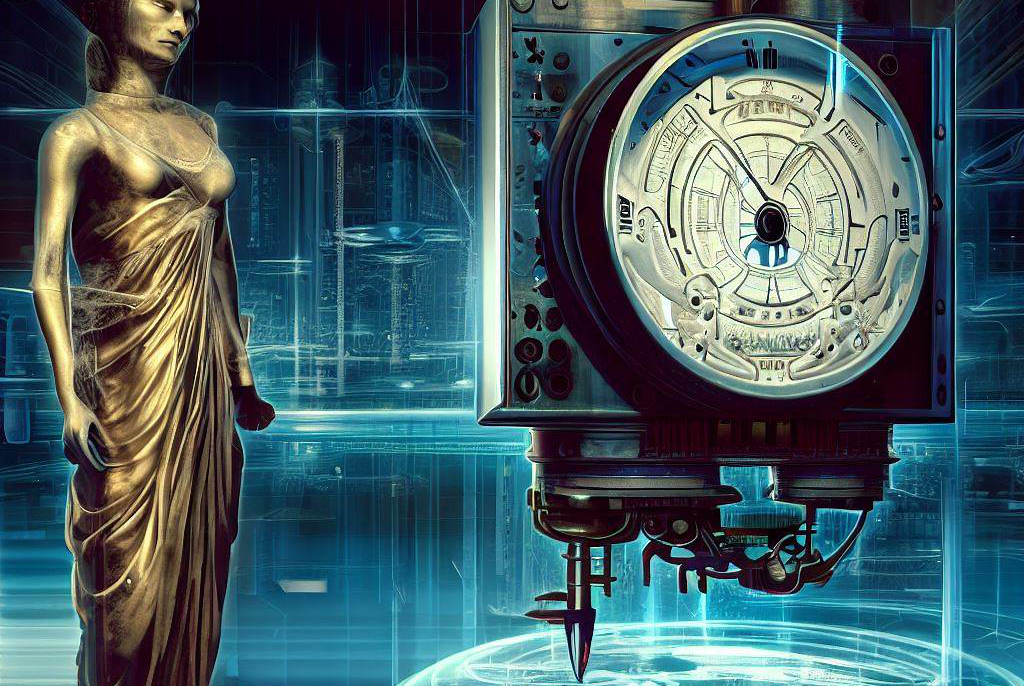
Leonardo da Vinci’s Designs for Mechanical Devices
Leonardo da Vinci is widely regarded as one of history’s most brilliant minds when it comes to engineering and invention. His notebooks are filled with intricate sketches and designs for hundreds of different mechanisms – many centuries ahead of their time. Some notable examples include his design for a flying machine resembling a helicopter (which utilized a screw-like mechanism rather than modern rotor blades), as well as various designs for armoured vehicles capable of withstanding enemy fire.
Da Vinci also created numerous designs for clockwork devices such as musical instruments and odometers. While some never made it past the concept stage due to technical limitations at the time, others were built in his lifetime – such as a massive crossbow capable of firing bolts over 250 metres.
Jacques de Vaucanson’s Famous Automaton – The Duck
Jacques de Vaucanson was a French engineer who is famous for creating some of the most impressive automata of his time. His crowning achievement was The Duck, a life-sized mechanical duck that could flap its wings, drink water, and even digest food.
The duck’s inner workings were incredibly complex, including more than 400 moving parts that were powered by a system of bellows and pumps. It was also equipped with various sensors and valves to control its movements and simulate digestion.
While The Duck was undoubtedly an engineering marvel, it also represented an important step towards the development of programmable machines. By creating a device capable of performing multiple actions based on pre-determined commands (such as drinking or flapping its wings), de Vaucanson laid the groundwork for modern robotics technology.
The Industrial Revolution and Automation
The Rise of Factories and the Need for Automation
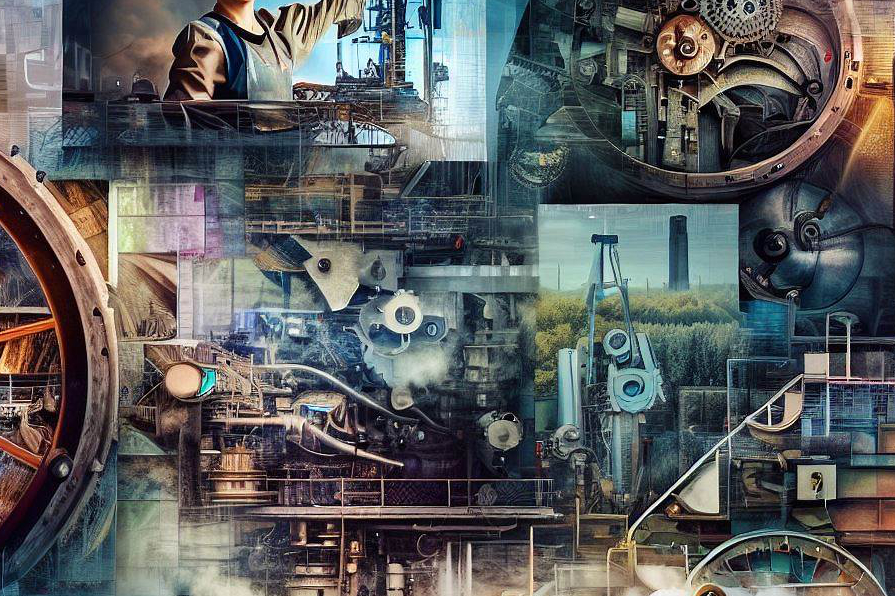
The Industrial Revolution saw a significant shift in how goods were produced. Prior to this time, most goods were produced by hand, usually in people’s homes. The introduction of new machines like the spinning jenny and power loom allowed for faster production of textiles, which drove demand for more factories.
As factories grew in size and complexity, there was a growing need for automation. One of the first major advancements in automation during this time was the development of water-powered machinery.
Waterwheels could be used to power machines like textile mills, greatly increasing their efficiency and reducing dependence on human labor. This led to the development of large-scale manufacturing processes that could produce goods at scale.
The Invention of the Steam Engine and Its Impact on Manufacturing
The invention of the steam engine by James Watt in 1765 revolutionized industry by eliminating dependence on water power. Steam engines could be used anywhere, regardless of access to natural resources like rivers or dams. By 1800, steam engines were being used to power textile mills throughout Britain.
Steam engines also allowed for the creation of new machinery that revolutionized manufacturing processes even further. For example, steam-powered locomotives allowed for rapid transportation between factories and markets, making it easier than ever before to distribute goods across vast distances.
The Development of Assembly Line Production
Assembly line production is often associated with Henry Ford’s automobile manufacturing plants in the early 20th century, but its roots go back much further than that. In fact, assembly line production can be traced back to Eli Whitney’s use of interchangeable parts in his musket manufacturing process during the late 18th century. Assembly line production involves breaking down a complex process into smaller steps that can be performed by different workers or machines working together in a coordinated fashion.
This allows for greater efficiency, cost savings, and reduced waste. By the early 20th century, assembly line production had become a key component of mass manufacturing in many industries.
Modern Robotics
Early Robotic Arms in Manufacturing: The Beginning of Automation
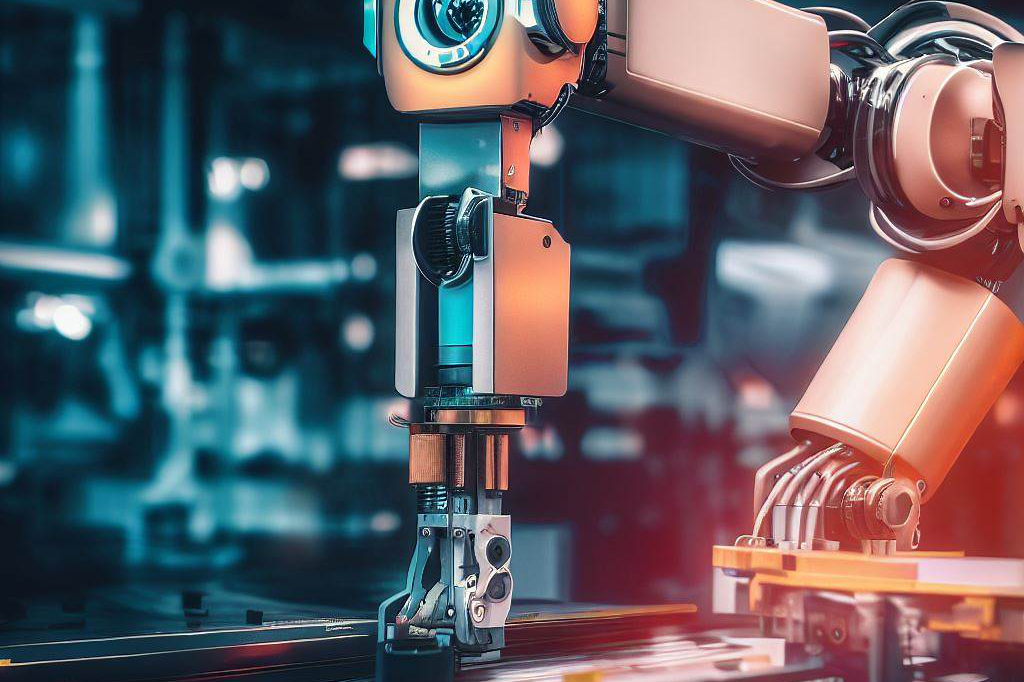
The utilization of robotic arms began in the 1960s when George Devol invented the first robotic arm capable of performing repetitive tasks. This invention paved the way for automation and changed the manufacturing industry forever. The Unimate, a programmable robotic arm capable of welding and manipulating materials, was soon adopted by General Motors.
This reduced production times drastically and led to an increase in productivity. Robotic arms are made up of several components, including sensors, actuators, and controllers.
These arms can perform a variety of tasks such as welding, painting, palletizing, assembling products on an assembly line and many others in factories all over the world today. They have become essential for improving accuracy, safety and reducing the time necessary to complete jobs.
The First Programmable Robots: A New Wave of Automation
In the late 1970s, researchers at Stanford University developed Shakey – one of the first robots with artificial intelligence (AI). Shakey was programmed to move around its environment autonomously, using cameras to identify obstacles and lasers for guidance. The introduction of AI paved the way for robots able to “think” on their own instead of following predetermined paths.
In 1981 Japan’s FANUC created the FANUC Robot series – one of the first programmable general-purpose robots that could be programmed through a teaching pendant by an operator. This development allowed manufacturers to achieve greater flexibility in their production processes, with robot programming becoming more user-friendly.
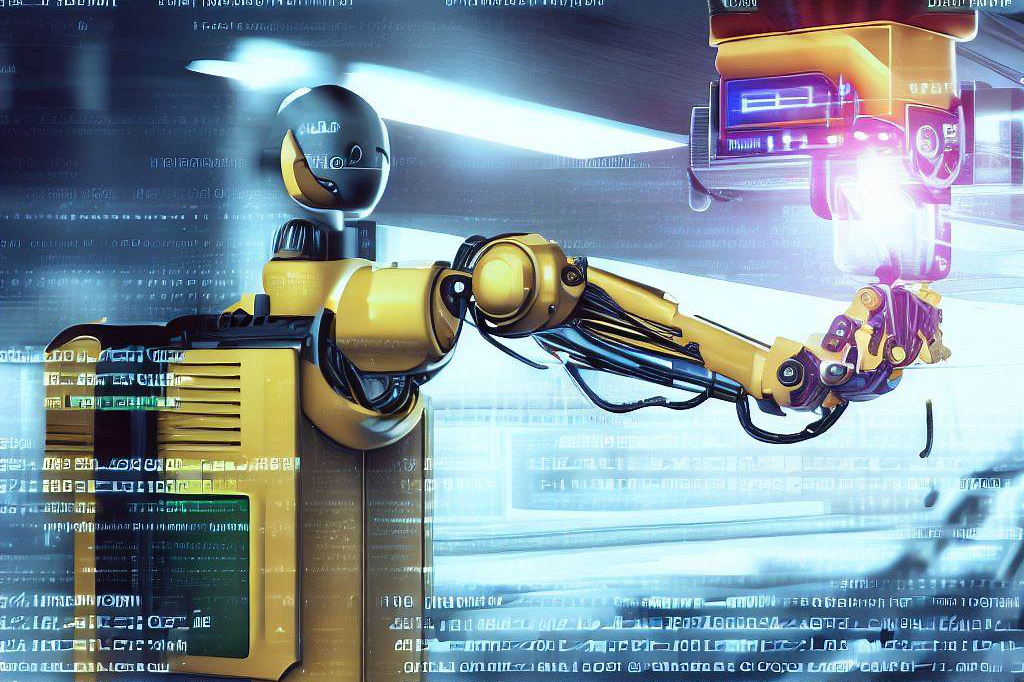
Advancements in Artificial Intelligence: From Reactive to Cognitive Systems
As technology advanced, so did opportunities for robotics integration into various industries, including healthcare, military defense systems, and logistics, just to name a few examples. Advancements such as natural language processing (NLP), machine learning (ML) and computer vision have propelled robotics into a new era of cognitive systems.
Today, robots can interpret and understand human speech, learn on their own, and are capable of making decisions based on data gathered from their environment. AI has enabled robots to perform complex tasks in dynamic environments with greater accuracy and efficiency, revolutionizing the way industries operate.
Modern robotics is continuously evolving as technology advances. We can expect further advancements in the field of AI and machine learning to transform traditional industries, making them more efficient, cost-effective and safer for employees.
Contemporary Robotics
Collaborative Robots (Cobots) in Manufacturing: The Future of Industry
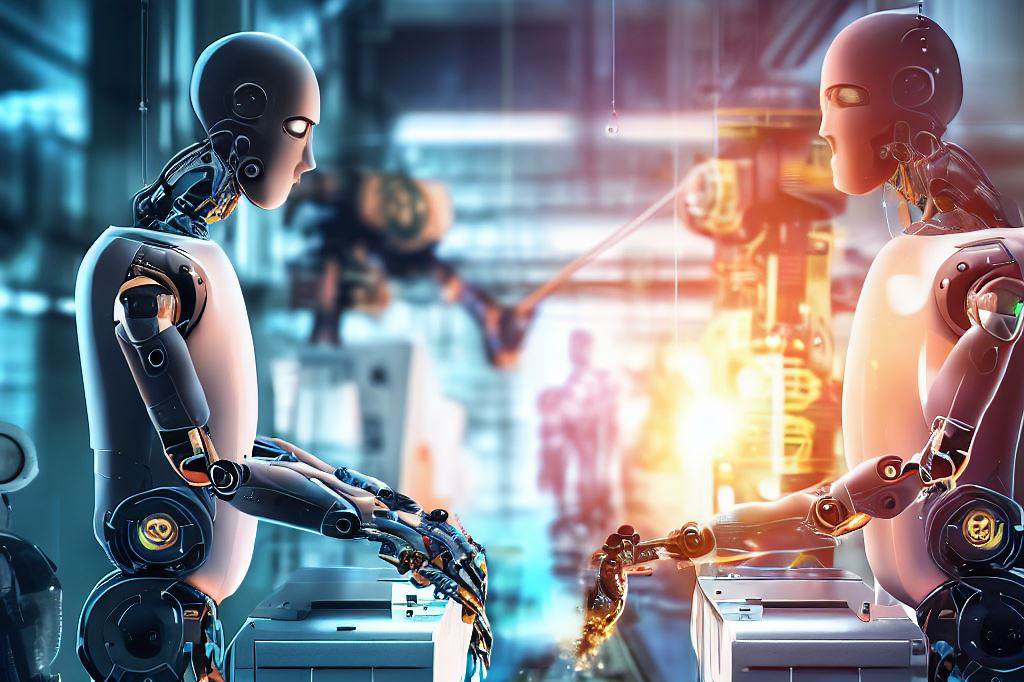
Collaborative robots, or cobots, are rapidly changing the landscape of manufacturing. These robots are designed to work alongside humans in a shared workspace without the need for safety barriers. They are equipped with advanced sensors and programming that allow them to recognize human presence and respond appropriately.
Cobots can perform repetitive tasks with speed and precision, freeing up human workers to focus on more complex tasks that require critical thinking skills. One example of a successful implementation of cobots is at the BMW plant in Spartanburg, South Carolina.
BMW introduced cobots to their assembly line in 2015 and has since increased production by 15 percent. The company has also seen a significant reduction in workplace injuries as cobots take over dangerous tasks like welding or heavy lifting.
Robot-Assisted Surgery and Medical Procedures: The Rise of the Machines
Robotic technology is revolutionizing the field of medicine as well. Robot-assisted surgery allows for smaller incisions, greater precision, and faster recovery times for patients.
One example is the da Vinci Surgical System, which uses small instruments and a camera attached to robotic arms controlled by a surgeon from a console. This system has been used successfully in various surgical procedures, such as prostatectomies and hysterectomies.
In addition to surgery, robots are also being used for medical procedures like rehabilitation therapy and drug administration. Paro, a therapeutic robot designed to look like a baby harp seal, has been used successfully in nursing homes for patients with dementia or Alzheimer’s disease.
Autonomous Vehicles and Drones: The Future of Transportation
The development of autonomous vehicles, or self-driving cars, has been one of the most exciting advancements in recent years. Companies like Tesla have already rolled out semi-autonomous vehicles, that can drive themselves on highways and adjust speed based on traffic.
However, there are still concerns about safety and reliability that need to be addressed before fully autonomous cars become a reality.
Drones are another area where robotic technology is having a significant impact.
These unmanned aerial vehicles have been used for various purposes, such as delivering packages or conducting search and rescue operations. Amazon has been experimenting with drone delivery, and organizations like the Red Cross have used drones to assess damage after natural disasters.
Overall, contemporary robotics is changing the way we work, live, and even receive medical care. With continued advancements in the field, it’s exciting to imagine what other possibilities may arise in the future.
Future Possibilities
Predictions for the Future of Robotics Technology
As technology continues to advance at an unprecedented pace, the possibilities for robotics are endless. Industries such as manufacturing and healthcare have already seen a significant impact from the use of robotics, but it is only the beginning. In the near future, it is predicted that robots will become more integrated into our daily lives and take on roles beyond what we ever thought possible.
Humanoid Robots as Companions or Assistants
One area where we can expect to see significant advancements in robotics technology is with humanoid robots designed to act as companions or assistants. These robots will not only be able to perform tasks such as cooking or cleaning, but they will also be able to provide emotional support and companionship. In fact, some companies are already working on creating robots that can recognize emotions and respond accordingly.
Imagine coming home after a long day at work and being greeted by your own personal robot assistant who can prepare dinner while also providing you with some much-needed company. With advancements in artificial intelligence, these humanoid robots could even become capable of learning your preferences and habits over time, making them even more valuable assets in our daily lives.
Robots Designed for Space Exploration or Deep Sea Exploration
Another exciting area where we can expect to see advancements in robotic technology is with robots designed for space exploration or deep sea exploration. As humans continue to push the boundaries of what is possible in terms of space travel and exploration of our planet’s oceans, robotic technology will play an increasingly important role. Already, NASA has sent numerous robotic rovers to explore Mars and other planets within our solar system.
And with private companies such as SpaceX looking towards commercial space travel, it’s clear that there will be many opportunities for robotic technology to contribute to these efforts.
Similarly, there are already underwater drones and robots being used for deep sea exploration and research.
These robots can withstand extreme pressure and temperatures, allowing scientists to explore areas of the ocean that were previously inaccessible. As these technologies continue to improve, we can expect to learn more about our planet’s oceans than ever before.
Ethical Considerations
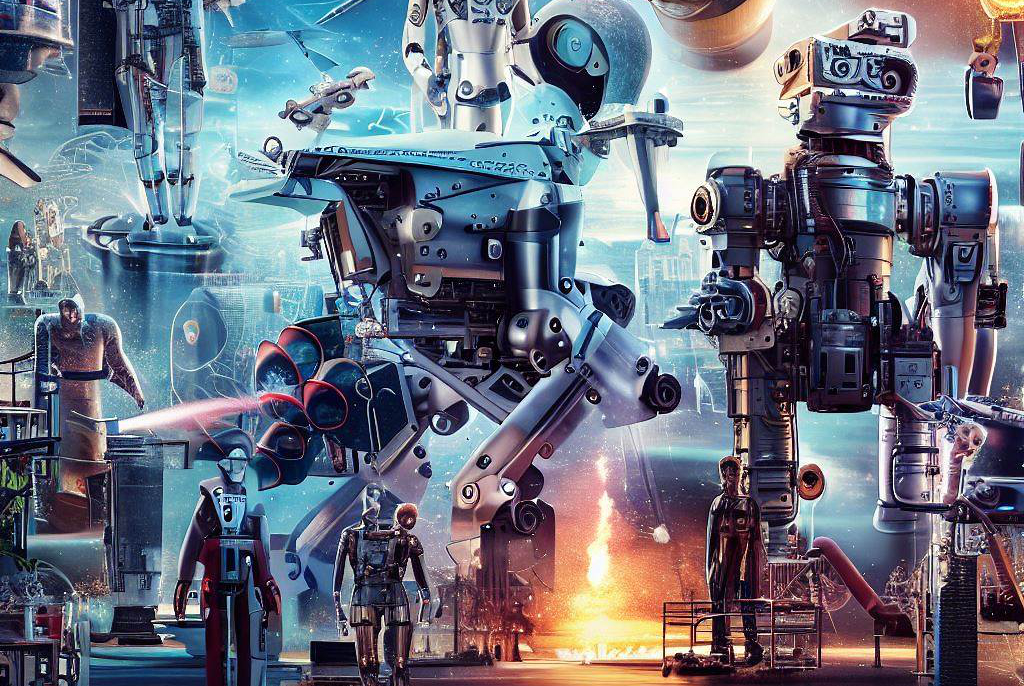
Job Displacement
One of the ethical considerations surrounding robotic technology is job displacement. As robotics technology advances and becomes more advanced, it may replace jobs traditionally held by humans. This has already been seen in industries such as manufacturing, where robots have replaced assembly line workers.
While this may increase efficiency and productivity, it also has social consequences as people lose their livelihoods. To address this issue, some propose the idea of a Universal Basic Income (UBI), which is a system where everyone receives a minimum amount of income regardless of their employment status.
UBI has gained popularity as a potential solution to job displacement caused by automation. However, there are debates on its effectiveness and feasibility.
Privacy Concerns
As robotic technology becomes more integrated into our daily lives, concerns about privacy also arise. Robots equipped with cameras or other sensors can collect data on individuals without their knowledge or consent. This raises questions about who owns this data and how it will be used.
To address these concerns, companies are implementing privacy policies that outline how user information is collected and used. Additionally, some countries are implementing regulations to protect citizens’ privacy rights regarding personal data collection.
Safety Issues
Another ethical consideration is the safety issue surrounding robotic technology. Robots can malfunction or make errors that could result in injury or even death to humans in close proximity to them. To address these concerns, safety regulations are being put in place that require thorough testing and certification before robots can be used in public settings or for certain tasks such as medical procedures or transportation.
Overall, while the benefits of robotic technology are numerous, it’s important to consider the ethical implications surrounding its use. Job displacement, privacy concerns, and safety issues are just a few examples of ethical considerations that need to be addressed by researchers, policymakers, and society as a whole as we move forward into an increasingly robotic future.
Final Thoughts
Throughout the journey through time and technology in robotics, one thing is clear: robots have come a long way since their early beginnings as simple automata. From the ancient civilizations that first toyed with the idea of mechanical devices, to the industrial revolution that brought about automation and assembly line production, to modern times where programmable robots with advanced artificial intelligence are commonplace, robotics technology has made an immeasurable impact on society.
As we look towards the future of robotics technology, it is difficult not to be optimistic about its potential for further advancement. From collaborative robots that work alongside humans in manufacturing settings to robot-assisted medical procedures and autonomous vehicles, there are countless possibilities for how robotics can continue to make a positive impact on our lives.
But as with any technological advancement, we must also consider the ethical implications of the widespread use of robotics. Job displacement may become an issue in certain industries as more tasks become automated.
Privacy concerns may arise as robots become more intelligent and capable of collecting data. Safety issues must also be addressed as robots interact more frequently with humans.
Ultimately, it is up to us as a society to carefully consider these ethical questions while continuing to push forward in our development of robotics technology. By doing so responsibly and ethically, we can ensure that this powerful tool remains a force for good in our world for many years to come.
TL;DR FAQs
What are some early examples of robotics in history?
Early examples of robotics in history include ancient Egyptian water clocks that used figurines to mark the passage of time, and China’s Han Dynasty (202 BC-220 AD) engineers who created incredible mechanical maids that could pour wine, play music, and even write calligraphy
How did the Industrial Revolution influence the field of robotics?
The Industrial Revolution introduced steam-powered machinery and assembly line production, which were significant milestones in the history of automation. Robots like the Unimate were invented to automate certain parts of production lines, marking the beginning of industrial robotics.
What were some of the first programmable general-purpose robots?
One of the first programmable general-purpose robots was the FANUC Robot series, created by Japan’s FANUC in 1981. These robots could be programmed through a teach pendant by an operator, allowing greater flexibility in manufacturing processes.
How has Artificial Intelligence impacted robotics?
Advancements in Artificial Intelligence, such as natural language processing, machine learning, and computer vision, have led to the development of cognitive systems. Robots today can understand human speech, learn independently, and make decisions based on data from their environment.
What are “Cobots”?
Cobots, or collaborative robots, are designed to work alongside humans in a shared workspace without the need for safety barriers. They have advanced sensors and programming that allow them to recognize human presence and respond appropriately. An example is the BMW plant in Spartanburg, South Carolina, which saw increased production and reduced workplace injuries after introducing cobots.
How is robotic technology used in medicine?
Robotic technology is used in medicine for robot-assisted surgery, providing smaller incisions, greater precision, and faster recovery times for patients. Robots are also used in rehabilitation therapy and drug administration. The da Vinci Surgical System and the therapeutic robot Paro are examples of such uses.
What is the status of autonomous vehicles and drones?
Autonomous vehicles, such as Tesla’s semi-autonomous cars, and drones are significant advancements in robotics. However, safety and reliability concerns need to be addressed for fully autonomous cars. Drones are used for delivering packages, search and rescue operations, and assessing damage after natural disasters.
What are the predicted future advancements in robotics?
Future advancements in robotics include humanoid robots that act as companions or assistants, and robots designed for space or deep sea exploration. However, these advancements will need to address ethical considerations like job displacement, privacy concerns, and safety issues.
What are the ethical considerations surrounding robotics technology?
Ethical considerations surrounding robotics technology include job displacement, privacy concerns, and safety issues. Potential solutions to job displacement caused by automation include a Universal Basic Income. Privacy issues are being addressed with privacy policies and regulations. Safety regulations are being put in place to require thorough testing and certification of robots.
References
China’s Han Dynasty mechanical maids
James Watt and the Steam Engine

C M, a seasoned editor, journalist, and consultant, is deeply fascinated by the convergence of technology, space, and the future of humanity.
With a particular interest in transhumanism, futurology, and the philosophical and ethical dimensions of these domains, C M serves as the lead contributor to TranscendSphere and SpaceSpotlight.
When not penning insightful articles on these rapidly evolving fields, C M indulges in their love for podcasts and books, proudly embracing their status as a ‘Happy Nerd Extraordinaire!’

